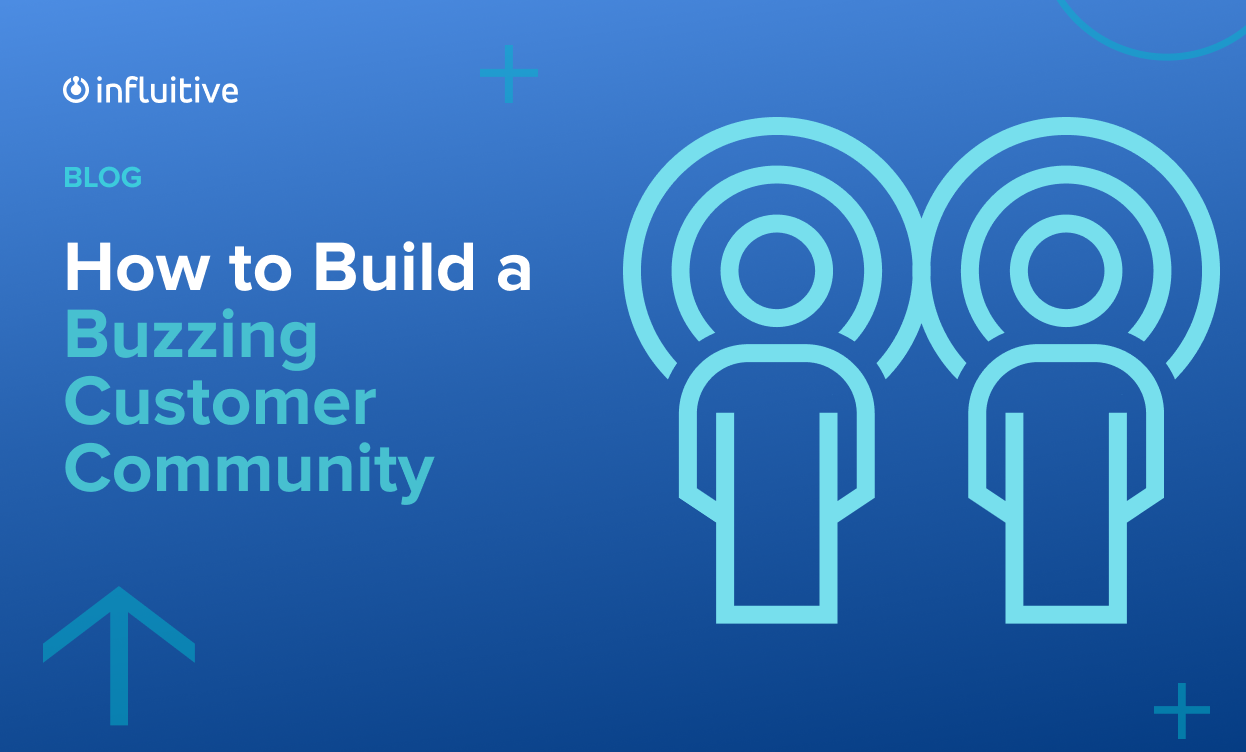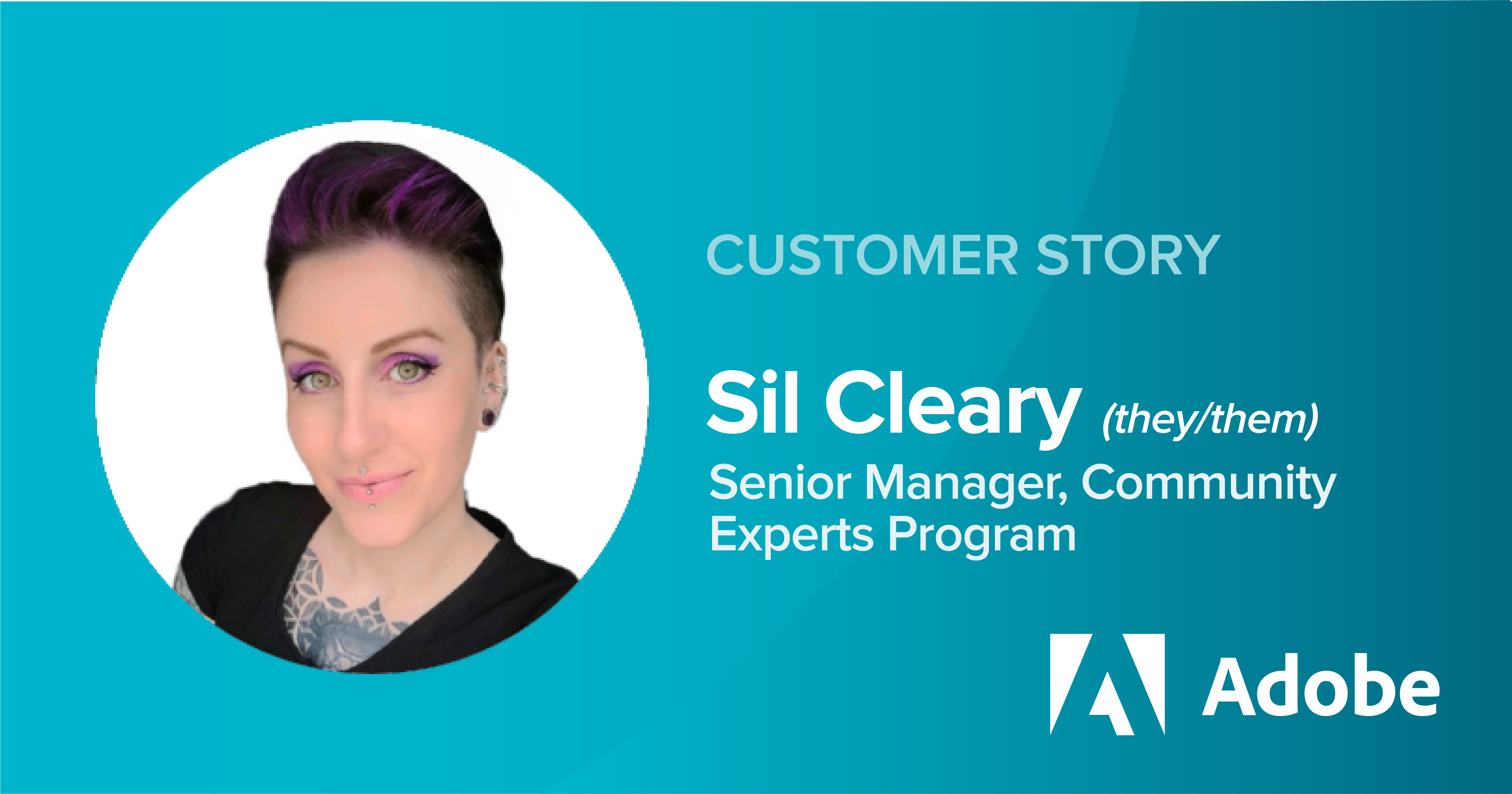How much do you know about your customers? And is that knowledge based on data alone? Demographics and analytics are useful, but they don’t shed much light on what your customers are feeling. A customer community is the solution to that problem.
In this post, we’ll explore how customer communities help you understand customers, gather valuable insights about your product, and boost your brand advocacy. Then we’ll tell you how to launch your own customer community.
What is a customer community?
A customer community is a forum for your customers to freely share thoughts, feedback, and questions about your products and services. It could be a Facebook group, a LISTSERV, or even a Slack channel, but for enterprise businesses, a customer community is usually housed on a subdomain on its website. An online customer community has moderators, which may be customers, employees, or both.
The customer community serves as a news source about your products and company. Often, customers who have a question about a product can find the answer in a community forum, which means they don’t have to contact a business for support.
The value of online customer communities

Did you know that 66% of customers who belong to a brand community say they’re loyal to that brand? That’s just one benefit of customer communities. Here are several more:
Increase customer engagement
Users can enable email and push notifications for conversations or topics they’re following, which means they’re likely to return to the forum and continue engaging. They may start to form relationships with each other, too, and return to the forum for social interaction.
Because customer communities require a login, you can track who’s most active and reach out to inactive users. You can also see what types of content have the highest engagement, which could help you develop your product messaging or marketing content.
Gather customer insights
The discussions in a customer community can show you what users do and don’t like about your product and how they use it. You might also learn about issues with your technology. For example, if several users are talking about a glitch in your iOS mobile app, you can troubleshoot that immediately — and thank users for bringing it up!
Build trust
“Trust” is a sentiment that’s nearly impossible to build with marketing and sales materials. But when you have a community of active customers sharing their insights about your products, you’re building trust in your brand. That’s because customers trust stories from other customers, and that trust eventually passes on to the brand.
Newcomers to your forums can search for both positive and negative comments about your product or its features. Preserving those negative comments in your forum will show that you value transparency and aren’t afraid of constructive criticism.
Develop customer advocates
Your online community is a great place to grow customer advocacy. Take note of the people who are most enthusiastic about your product, and consider recognizing your “super users” in some way. For example, you could assign a star rating based on how much feedback a user provides over time, or just add “super user” under a person’s name after they’ve posted a specific number of comments.
In a B2B customer community, you might also invite your top users to write a blog post or record a video about how your product solved a problem for their company. First-person customer stories demonstrate how you help people, which can inspire trust in your brand.
Improve customer retention
Think of some of the common reasons SaaS companies lose customers, like absent features or low engagement with the product. In a customer community, users can talk about these issues and solve problems for each other. And you can proactively reach out to users for additional feedback if they have suggestions for new features. In-the-moment engagement with fellow customers and customer success teams can improve customer retention.
Enable self-service support
Customers may like your brand, but that doesn’t mean they’ll contact you when they need help. In fact, 69% of customers prefer to resolve issues on their own, if possible. A community forum helps customers post questions, find information, and gather input from multiple people. And that reduces customer service inquiries for your business.
Drive upsells
If you have several products or different pricing tiers, the chatter in your customer community could convince customers to buy something more from you. Say, for example, that your top-tier SaaS subscription includes analytics that are unavailable at lower tiers. If your top-tier subscribers are raving about the insights they’re getting from your analytics, a lower-tier subscriber might decide to upgrade.
Generate buzz
When you’re developing new products or features, present them to your community and ask them to vote for their favorite. That accomplishes two objectives: showing customers that you care about their opinions, and generating interest in the upcoming product or feature release.
6 customer community examples
So what does a customer community look like? We’ve gathered six examples for you.
Adobe

The Adobe Creative Suite comes with everything visual artists need to create stunning designs and images. It also comes with a big learning curve. The Adobe Support Community gives Adobe product users access to in-depth information, helping them solve problems on their own. The Photoshop community alone has more than 105,000 conversations, which is a testament to how active the community is. They also run the Adobe Community Experts Program, a superuser program that recognizes their top contributors within the Adobe Support Community.
Trimble Viewpoint
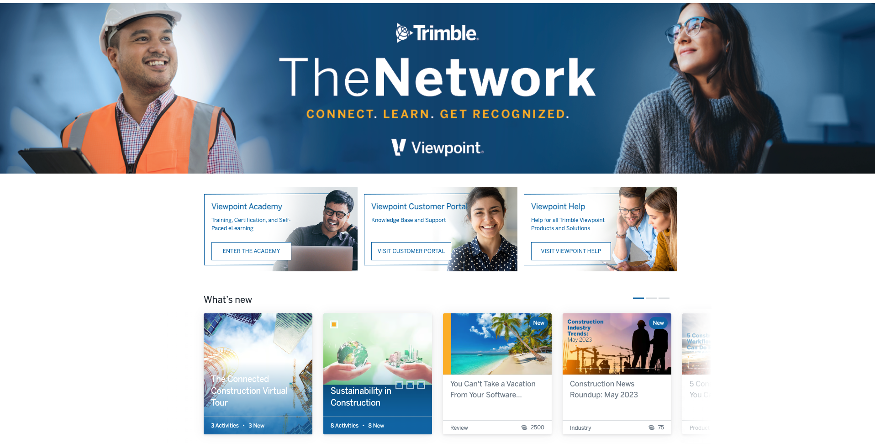
Trimble Viewpoint is a construction management platform that used Influitive to build a thriving community of more than 6,000 members. Specific initiatives within the community have included re-engagement campaigns for inactive users, and a campaign about the effects of isolation, which was a major industry concern at the beginning of the COVID-19 pandemic.
Esker
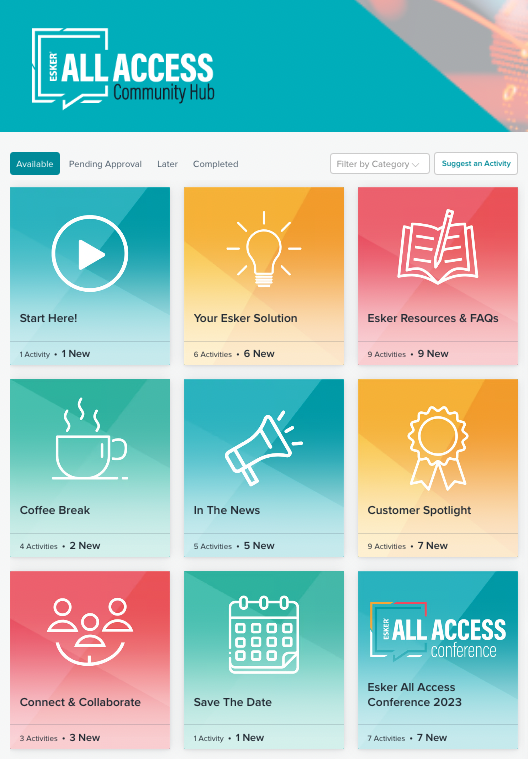
Esker is an AI-powered cloud platform that eliminates tedious procure-to-pay and order-to-cash tasks. It has subsidiaries around the world that serve customer segments with unique needs and preferences. Esker used Influitive to set up customer communities for each subsidiary, with each subsidiary managing its own community. In the United States, Esker uses weekly challenges — one fun, one educational, and one ask — to engage its customer community.
FloQast
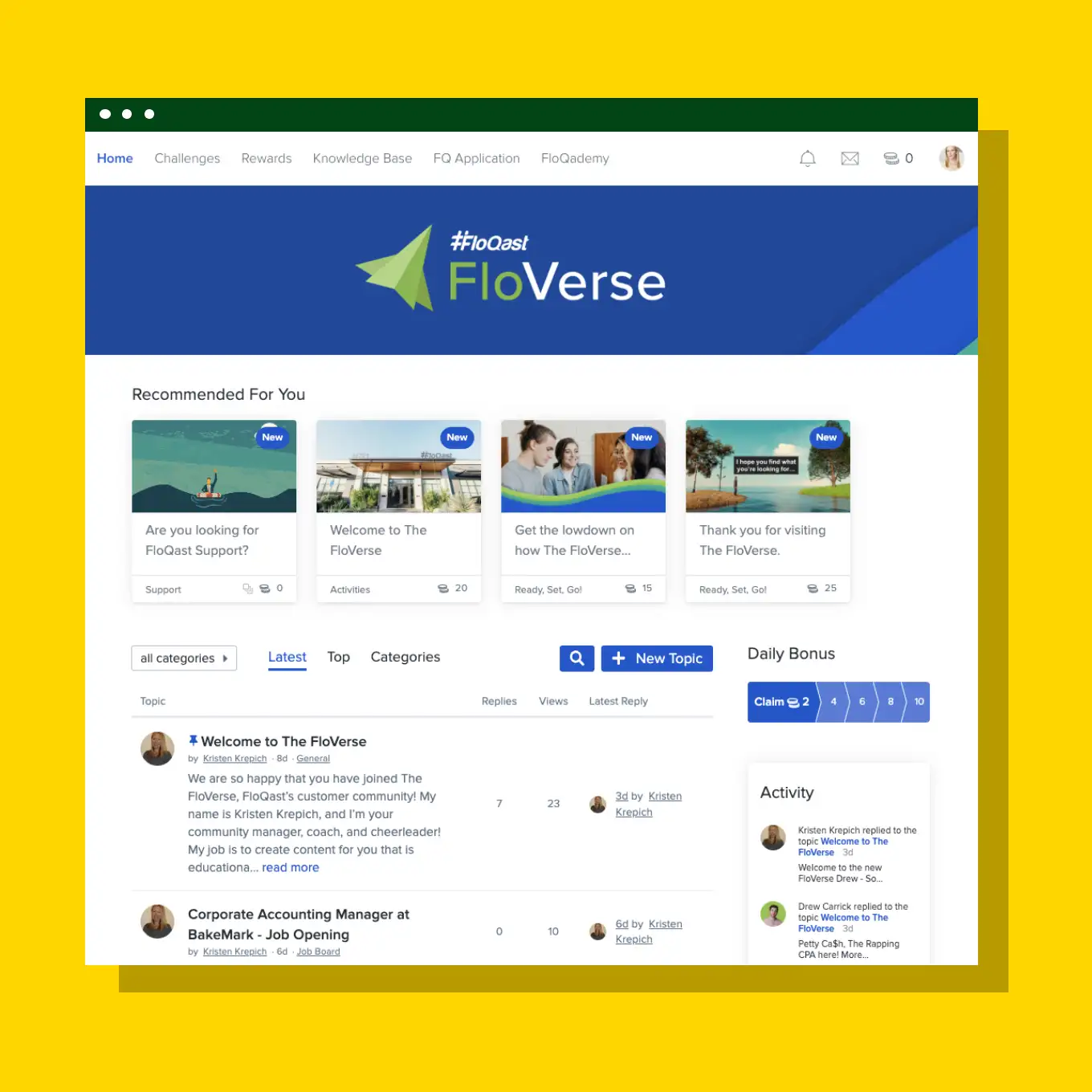
FloQast–a provider of accounting workflow automation software created by accountants for accountants–created The FloVerse Community to help its customers maximize the value of their FloQast products and accounting practices. Community members are given the opportunity to connect with and learn from like-minded FloQast users, gain exclusive access to rewards, and receive community recognition.
UserTesting
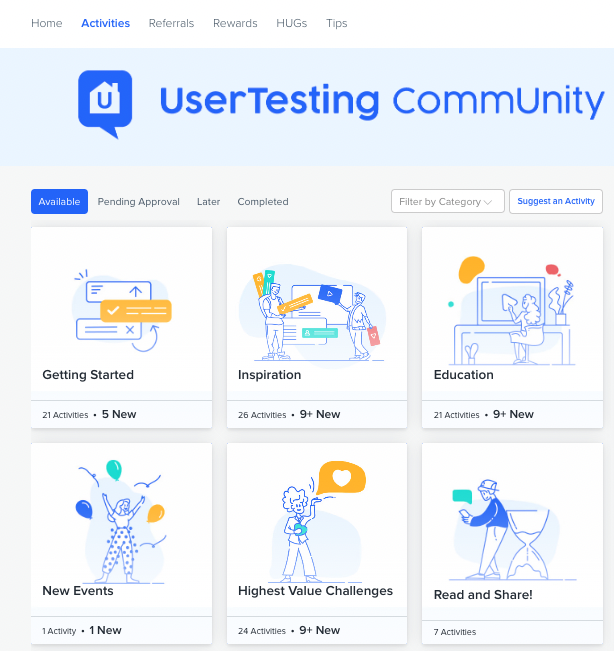
UserTesting is a product-testing platform with a unique business model: It pays people to test products for its customers, and it gathers input in a variety of ways (including monitoring facial expressions as users try out products). It connects its users through its “CommUnity,” where they can talk about their experiences, ask questions, and even offer technical tips.
Intuit TurboTax

The Intuit TurboTax Community includes a broad range of topics and discussions, and not just about Intuit’s products. Community members can find information on lowering debt, investing, improving their credit score, and other financial health topics. They also have the TurboTax Ambassador Program, which rewards customers for leveling up their financial knowledge and for sharing their love for TurboTax.
How to build a thriving customer community
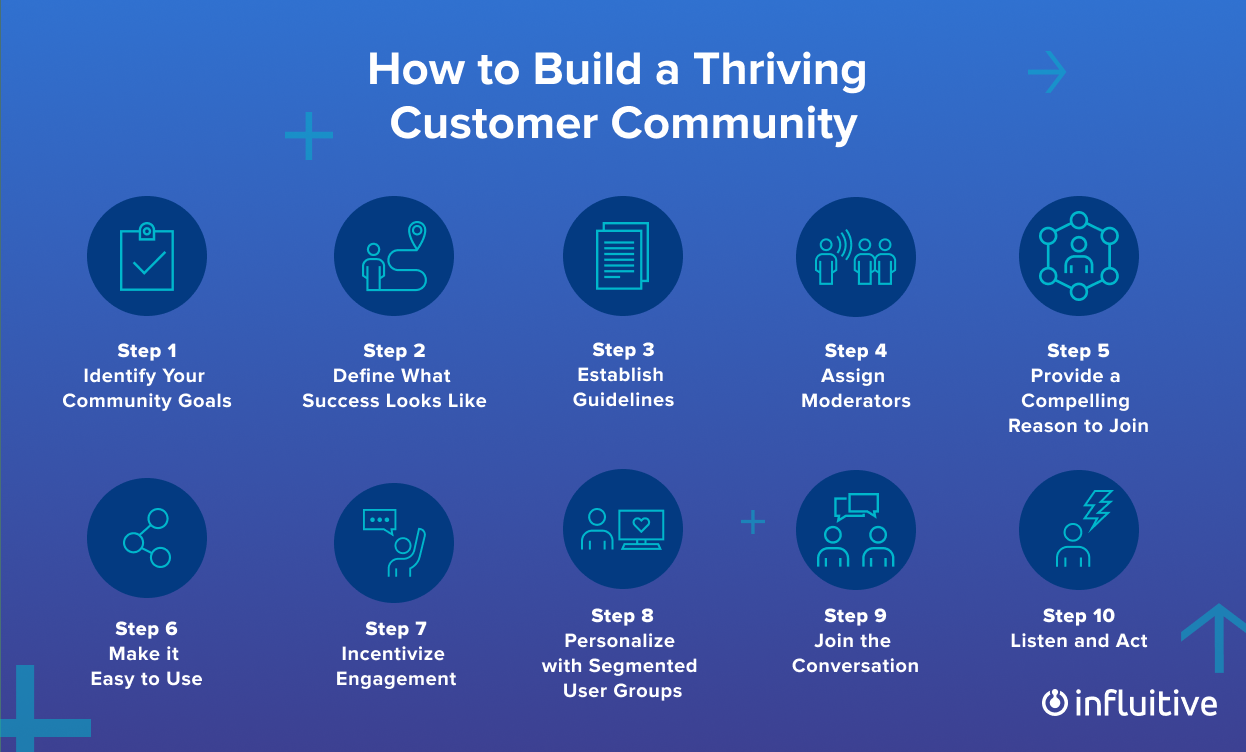
Now that you’ve learned about the value of customer communities, you may be wondering how to create one for your brand. We’ve got some tips on how to do that.
Identify your community goals
Decide what you want from your community. Your goals might include upselling, reducing support requests, building brand loyalty, gathering insights for product development, or something else.
Define what success looks like
Determine what KPIs you’ll measure to gauge the success of your efforts. For example, if your goal is to foster brand loyalty, you might first need to establish a baseline net promoter score (NPS) across a segment of customers and measure it again in six months.
Establish guidelines
Minimize the risk of conflict by creating clear guidelines on what is and isn’t appropriate content. For example, you might define what’s considered “offensive” content and explain the process for reporting it, as well as explain best practices for posting and responding to comments.
Assign moderators
Many communities run independently with little need for oversight, but you’ll still want a few moderators that can step in if needed. You could appoint employees as moderators, but also keep an eye out for brand advocates that might love the opportunity to moderate.
Provide a compelling reason to join
How will you convince customers to join your community? Your customers will want something in exchange for registering, like a special offer, a sneak peek at products you’re developing, or access to features in beta testing. Once you’ve determined your offering, promote your new community through the channels your customers use.
Make it easy to use
Organize your forums to make them easy to navigate, and use software that enables push notifications and private messaging. Your community should also have a search function, so users can quickly find information.
Incentivize engagement
Recognize and reward customers for sharing content, interacting with others, and giving you feedback. Recognition could be in the form of a public shout-out, a special offer, or a digital badge.
Personalize with segmented user groups
If you’ve already segmented your customers for marketing purposes, you can set up user groups and forums for each segment. For example, you could have a “New Customers” group and within that, forums based on how customers use the product (personally or professionally).
Join the conversation
While you mostly want to let customers drive the conversations in your community, you should also contribute from time to time. You can start discussions, solicit feedback, and respond to inquiries. You can also comment to affirm or expand upon one customer’s advice to another.
Listen and act
Think of your customer community as a product — you need to monitor its performance and continually improve it. Set up a “How to use this forum” forum and take note of questions or frustrations users share. Respond promptly to complaints and explain what next steps you’re taking.
Launch your customer community with Influitive
A customer community gives you a better way to engage with customers. You can use it to test new ideas before they go to market, gather feedback on your current offerings, and re-engage customers who’ve drifted off. And with Influitive, you can launch your community quickly.
Learn more about how we help businesses level up their customer engagement — then reach out when you’re ready for a demo!











































